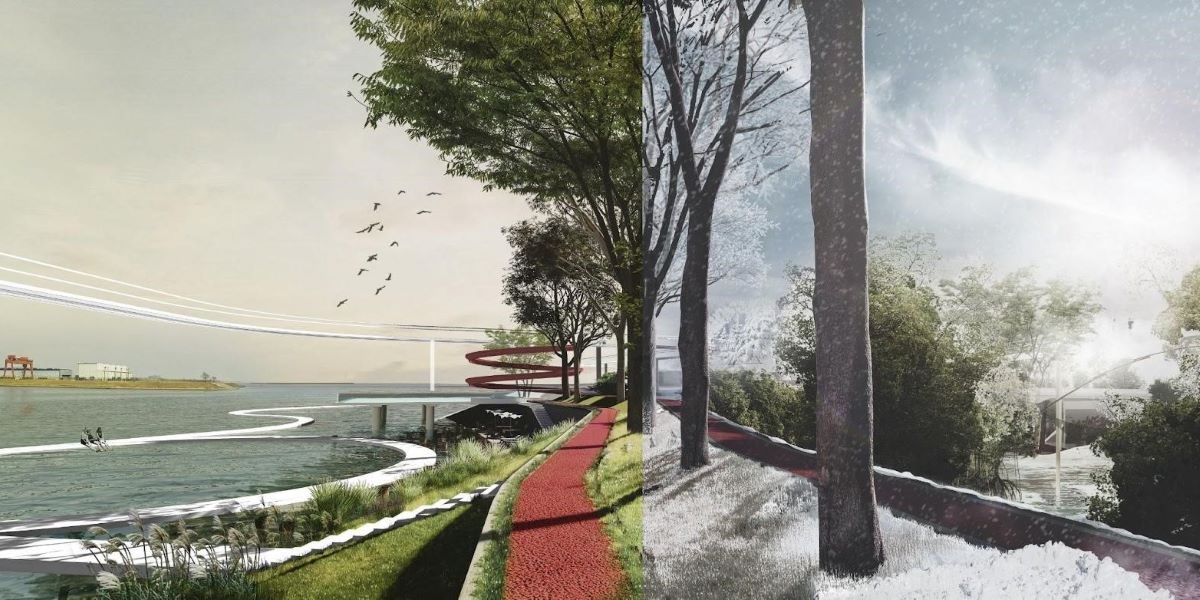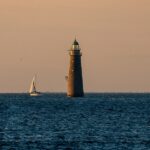Dingwen Wu: Innovator in Landscape and Urban Design
Dingwen Wu is a Landscape Project Designer at Field Operations with a background in architecture and landscape architecture. He earned his master’s degree in landscape architecture from the University of Pennsylvania after training as an architect in China. Wu’s work focuses on creating dynamic public spaces that balance infrastructure, ecology, and social interaction. His professional experience spans global projects in the United States, Canada, Singapore, Korea, Saudi Arabia, and the UAE. Recognized for his innovative contributions, he has received multiple international awards, including the Silver Prize in the London Design Award, the Silver Prize in the MUSE Design Award, the Silver Prize in the New York Architectural Design Award, and the Bronze Prize in the International Design Award.
Heat Afterlife: A Vision by Dingwen Wu and Yanhao Chai
Co-designed by Dingwen Wu and Yanhao Chai, Heat Afterlife reimagines the use of industrial waste heat as a tool for urban revitalization. In Tianjin, a major hub for steel production, heavy industry has slowed due to environmental regulations, placing pressure on high-emission industries to adopt sustainable practices. This project explores a new approach by using waste heat as a resource for ecological and urban improvement, rather than focusing on shutting down factories.

Harnessing Waste Heat for Ecological and Urban Benefits
The steel-making process generates significant amounts of low-grade waste heat, with a small percentage currently being recovered. This waste heat exacerbates the urban heat island effect and contributes to environmental inefficiencies. Heat Afterlife proposes a system that utilizes waste heat to create microclimates, support urban agriculture, promote aquaculture, and enhance public spaces—turning industrial emissions into a valuable resource.
A New Model of Industrial Symbiosis
By studying the steel industry’s production cycle, Heat Afterlife identifies underutilized industrial hot water as a key inefficiency. The project introduces three primary strategies to repurpose waste heat:
- Creating Landscape and Microclimate: Waste heat supports environments such as heated plazas, aquaculture zones, and exotic botanical gardens.
- Heat Corridor Infrastructure: Integrating waste heat pipes into an elevated cycling path creates a visible and functional heat distribution network.
- Water Management and Purification: Reclaimed water used for heat exchange also supports stormwater management, greywater purification, and ecological resilience.
Site Implementation: Transforming Industrial Spaces
The project is implemented across three key sites, each demonstrating the benefits of waste heat utilization:
Site 1: Urban Integration and Community Activation
Located next to the factory, this site features a botanical wetland that collects greywater and urban runoff. Elevated “sky rides” carry hot water pipes, forming a visible heat corridor. Waste heat fosters algae farming, aquaculture, and a heated public plaza, enriching the urban experience and creating an interactive microclimate.
Site 2: Restoring Riverfront Ecology
Positioned along the Haihe River, this site replaces hard riverbanks with a valley buffer zone that supports flood mitigation and ecological restoration. Waste heat sustains plant life year-round, enabling mangrove growth and establishing a non-icing swimming area in winter while preserving spaces for seasonal ice sports.
Site 3: Agricultural Innovation and Thermal Gradients
Located on farmland south of the factory, this site employs a “bubble” typography design to optimize heat retention and water purification. It integrates parallel valleys for runoff management, enhances algae cultivation, and provides hot springs and saunas—illustrating the seamless fusion of industry, ecology, and recreation.

Redefining Industrial Sustainability
Heat Afterlife challenges the notion that industrial decline is necessary for sustainability. Instead, it demonstrates how factories and ecological prosperity can coexist. By repurposing waste heat, the project fosters urban resilience, environmental restoration, and economic diversification. Waste heat is no longer a byproduct—it is a regenerative force fueling sustainable landscapes and public spaces.
International Recognition and Awards
Heat Afterlife has earned global acclaim, winning multiple international design awards, including:
- Silver Prize in 2024 MUSE Design Award Infrastructure Landscape category Bronze Prize in the 2024 International Design Awards
- Silver Prize in 2024 London Design Awards Industrial Landscape Category
- Silver Prize in 2024 NY Architectural Design Awards Industrial Landscape category

These accolades reinforce Dingwen Wu’s and Yanhao Chai’s leadership in transforming industrial excess into ecological and community-driven solutions, positioning them as innovators in sustainable urban design.
Published by Elle G.

















